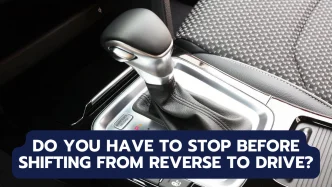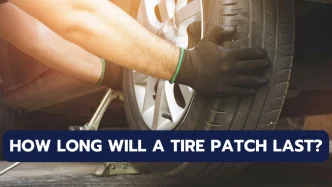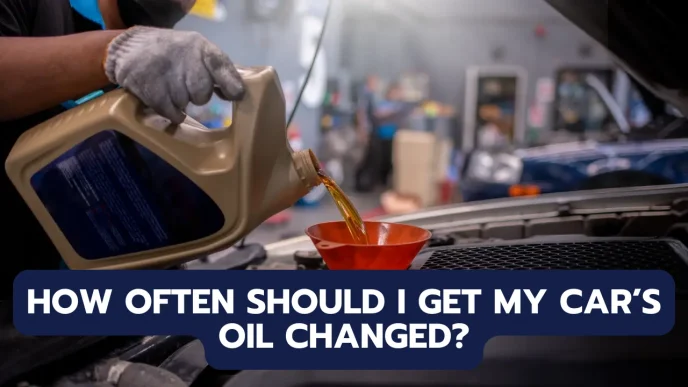Modern vehicles have simplified driving significantly with automatic transmissions. These systems remove the need for manual gear changes, allowing drivers to focus on the road and experience a smoother ride. However, despite their ease of use, there are critical steps you should take when shifting between gears to avoid costly damage. One common question is whether you need to come to a complete stop before shifting from Reverse to Drive or vice versa. Here’s a detailed look at how automatic transmissions function, the potential risks of improper shifting, and the best practices for keeping your drivetrain in optimal condition.
How Does an Automatic Transmission Work?
Before diving into the shifting process, it’s essential to understand how an automatic transmission operates. Unlike manual transmissions, where drivers engage gears through a clutch, automatics handle this task through a complex, hydraulically operated system. The heart of this system is the transmission fluid, which creates hydraulic pressure to facilitate gear changes. This fluid pressure is determined by the speed, load, and driver input, allowing the transmission to select the appropriate gear automatically.
Today’s automatic transmissions are also equipped with computer controls that optimize gear shifting based on various inputs. Sensors track engine speed, vehicle speed, throttle position, and driving style to ensure smooth and timely shifts. Some advanced transmissions even adapt to individual driving preferences, offering relaxed or aggressive shifting patterns based on how you typically drive.
Given the intricacies of an automatic transmission, sudden or improper shifts between Drive and Reverse can place undue stress on these components, leading to wear or damage over time.
Why Should You Stop Before Shifting From Reverse to Drive (or Vice Versa)?
Protecting Your Transmission Components
When you switch between Reverse and Drive, several components inside your automatic transmission need to realign and change direction. The planetary gear sets, clutch packs, and torque converter all work together to control the transfer of power. If you attempt to shift without fully stopping, these components are forced to abruptly reverse direction, which can cause excessive strain.
For instance, if you shift from Reverse to Drive while still moving backward, the transmission must rapidly halt the reverse motion and begin forward propulsion. This can create a “shock load” on the gears and clutches, leading to premature wear or even failure. Over time, these repeated shocks can significantly reduce the lifespan of your transmission, resulting in expensive repairs.
Safeguards in Modern Transmissions
Many modern vehicles include safety features to mitigate the risk of accidental damage. Due to the hydraulic design of automatic transmissions, there are no rigid mechanical connections between internal parts, which offers some flexibility. In addition, electronic control systems in newer vehicles may prevent shifts from Reverse to Drive (or vice versa) unless the vehicle is moving at a very low speed (typically under 5 mph). This prevents sudden, damaging gear changes.
However, while these safeguards can protect against occasional mistakes, they are not a substitute for proper shifting habits. Repeatedly relying on these systems can still contribute to wear and tear on the drivetrain, particularly on components like the universal joints and axles.
Situations Where Quick Shifts Might Be Necessary
There are scenarios where you might need to shift quickly between Reverse and Drive, such as when rocking your vehicle out of snow or mud. In such cases, moderate shifting between gears can help free your car without immediate damage. However, even then, it’s crucial to avoid overdoing it. Rapid, forceful shifts can strain the drivetrain and increase the risk of damage to the axles and transmission.
If you find yourself stuck and need to rock the vehicle, use gentle, controlled shifts and avoid excessive throttle input. This minimizes the risk of shocking the drivetrain.
The Importance of Stopping Before Shifting Into Park
How the Parking Mechanism Works
Shifting into Park is a unique process compared to shifting between Drive and Reverse. When you place your automatic transmission into Park, a component called the “parking pawl” engages. The parking pawl is a small metal pin that locks into a notched wheel inside the transmission, effectively preventing the vehicle from moving.
Risks of Shifting Into Park While Moving
If you attempt to shift into Park while your vehicle is still in motion, the parking pawl can collide with the rotating gear, potentially causing it to snap or bend. If the parking pawl becomes damaged, your vehicle may no longer stay securely in place when parked, creating a significant safety risk. Additionally, repairing or replacing a damaged parking pawl is often costly and time-consuming.
To avoid this, always bring your vehicle to a complete stop before shifting into Park. For added security, especially on inclines, engage the parking brake after shifting into Park. This extra step reduces stress on the parking pawl and provides an additional layer of protection against your vehicle rolling away.
How to Prolong the Life of Your Automatic Transmission
Adopt Proper Shifting Techniques
One of the simplest ways to extend the life of your automatic transmission is to adopt proper shifting habits. Always follow these guidelines:
- Stop fully before shifting from Drive to Reverse, Reverse to Drive, or into Park.
- Avoid aggressive or abrupt gear changes, especially when moving at higher speeds.
- Use gentle throttle input when shifting gears to reduce stress on the drivetrain.
Regular Maintenance
Maintaining your automatic transmission is just as important as proper shifting. Follow your vehicle manufacturer’s recommendations for transmission fluid changes and inspections. Transmission fluid breaks down over time and can lose its effectiveness, leading to poor performance or damage. Clean, high-quality transmission fluid helps ensure smooth operation and reduces wear on internal components.
Monitor for Warning Signs
Stay alert for any signs of transmission issues, such as:
- Delayed or rough shifting between gears.
- Unusual noises, like grinding or whining.
- Transmission fluid leaks under your vehicle.
- Dashboard warning lights, such as the Check Engine or Transmission warning light.
If you notice any of these symptoms, have your vehicle inspected by a qualified technician promptly. Addressing minor issues early can prevent more significant and expensive problems down the road.
Why is it bad to shift from Reverse to Drive without stopping?
Shifting from Reverse to Drive without stopping can place sudden stress on the transmission’s gears, clutches, and torque converter. This abrupt change in direction can lead to excessive wear and potential damage over time, reducing the lifespan of your transmission and increasing the risk of costly repairs.
How do modern automatic transmissions protect against improper shifting?
Many modern automatic transmissions have electronic controls that prevent shifting into Reverse while the vehicle is moving forward at higher speeds. These systems delay the gear change until the vehicle slows to a safe speed, typically below 5 mph. This feature helps prevent accidental damage but is not a substitute for proper shifting habits.
Is it okay to shift quickly between Drive and Reverse when stuck in snow?
In situations where your vehicle is stuck in snow or mud, gentle shifting between Drive and Reverse can help rock the vehicle free. However, avoid excessive force or rapid shifts, as these actions can strain the axles and drivetrain. Always use controlled movements and avoid over-revving the engine.
What happens if you shift into Park while the car is still moving?
Shifting into Park while the car is moving can damage the parking pawl, a small metal pin that locks the transmission. If the parking pawl fails, the vehicle may not stay securely in place when parked, posing a safety risk. Always come to a complete stop before engaging Park.
Can I damage my transmission by shifting into Neutral while driving?
Shifting into Neutral while driving doesn’t typically damage the transmission, but it can reduce your control over the vehicle. You lose engine braking, which can be dangerous in downhill situations or during emergencies. It’s best to keep the transmission in Drive unless stopping or parking.
How often should transmission fluid be changed?
Transmission fluid change intervals vary depending on the vehicle make and model. Generally, it’s recommended to change the fluid every 30,000 to 60,000 miles. Check your owner’s manual for specific guidelines, and ensure fluid changes are done by a qualified technician.
What are common signs of transmission problems?
Common signs include delayed shifting, rough or jerky gear changes, unusual noises like grinding, fluid leaks, and warning lights on the dashboard. If you notice any of these issues, have your vehicle inspected promptly to avoid more severe damage.
Does using the parking brake help protect the transmission?
Yes, using the parking brake helps reduce stress on the parking pawl when the vehicle is parked, especially on inclines. This added precaution ensures your vehicle stays securely in place and minimizes the risk of transmission damage.
Can driving habits affect transmission lifespan?
Absolutely. Aggressive driving, frequent rapid shifts, and neglecting maintenance can all shorten the lifespan of your transmission. Adopting smooth, controlled driving habits and following maintenance recommendations will help ensure long-lasting performance.













